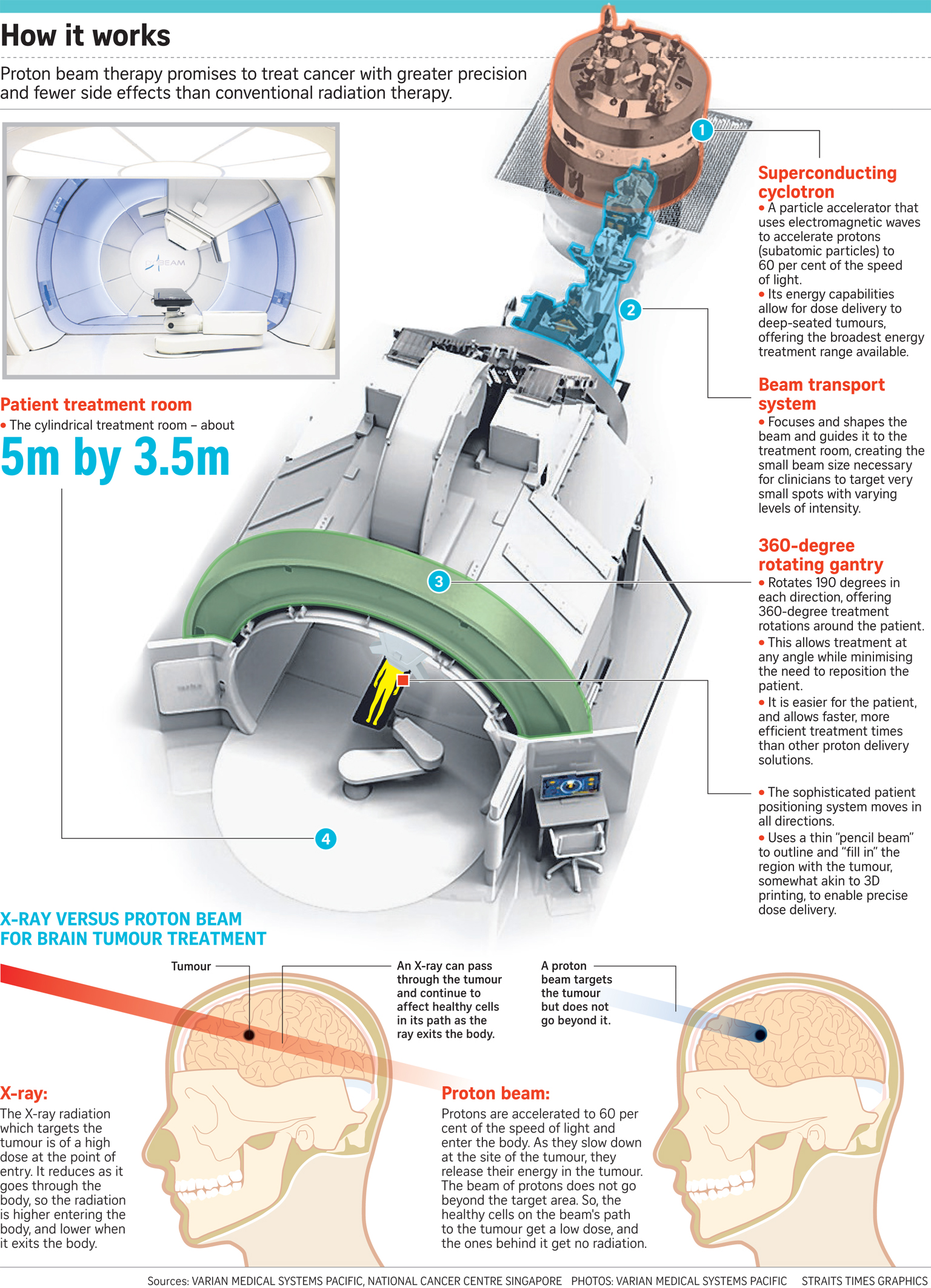Precision cancer treatment expected by 2020
Proton beam therapy uses 60% less radiation, resulting in lower risk of damage to healthy tissue
Sign up now: Get ST's newsletters delivered to your inbox
Follow topic:
It costs more, but proton beam therapy can target cancer cells with greater precision - and it could be available in Singapore by next year.
The Singapore Institute of Advanced Medicine Holdings (SAM) announced yesterday that it has finished installing the cutting-edge ProBeam Proton Therapy System at its Proton Therapy Centre in Biopolis at one-north.
The centre, which is scheduled to open early next year, cost about $150 million to build.
SAM chief medical officer Kwek Boon Han said proton therapy uses about 60 per cent less radiation than conventional radiation therapy, which uses X-rays or gamma rays. This results in a lower risk of damage to healthy tissue around the tumour.
"To get sufficient radiation to the tumour in conventional therapy, a large dose of radiation is applied to the tissue before reaching the tumour. There is also a significant remaining dose of exit radiation that affects normal tissue after hitting the tumour," said Dr Kwek.
A proton beam, on the other hand, concentrates a high radiation dose only at specific target points, using a thin "pencil beam" that outlines and "fills in" the region with the tumour in a manner similar to three-dimensional printing.
This means that healthy tissue on the beam's path to the tumour receives only a low dose and there is no exit radiation as the beam does not go beyond the target area.
Dr Kwek added that proton therapy will halve the incidence of secondary cancers that can develop as a result of radiation treatment - from 12.8 per cent to 6.4 per cent.

SAM chairman and chief executive Djeng Shih Kien said proton therapy is especially helpful for treating cancers that are difficult to reach without affecting sensitive organs nearby. These cancers include brain, spinal, head and neck cancers.
"Normal radiation therapy can come with severe complications. You may go blind or lose your hearing from being treated for head and neck cancer," he said.
Conventional radiation therapy currently costs about $25,000 to $30,000.
Proton therapy at the centre will cost up to thrice as much and require about the same number of sessions, said Dr Djeng.
SAM is working with insurance agencies to include proton therapy in their coverage, he added.
The centre plans to treat about 400 patients a year initially, and the sessions will last between 20 and 30 minutes. A patient can require as many as 30 sessions.
Dr Djeng said SAM is also planning to set up a foundation to help defray the costs for patients who cannot afford them.
The Ministry of Health (MOH) said it has worked with a committee comprising experts from the private and public sectors to develop a set of regulatory standards for proton beam therapy that providers must comply with, including a list of allowable medical indications.
It added: "MOH is currently consulting proton beam therapy stakeholders on these standards, and will finalise and publish them on MOH's website by end 2019."
From 2021, two other proton beam systems will also be available - at the National Cancer Centre Singapore and Mount Elizabeth Novena Hospital.

